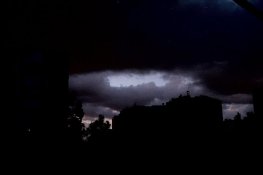To add my two pennyworth, I love all of these cameras - Leica Zeiss Nikon Canon.
I have just finished stripping and servicing two dysfunctional Contaxes, a lla and a lla. Both had multiple problems, shutter not firing on some speeds, other speeds awry, viewfinders dull and hazy, helical mounts rattling and dry.
These cameras are easy to access and very well made making the job of restoration predictable and straightforward, at every stage I was totally impressed with the design, manufacture and materials.
With ultrasonic cleaning of the slow speed escapement and self timer mechs, flood cleaning of the wind on and speed changing assemblies the speeds were revived. Further work on the shutter tensioning and general lubrication and thorough cleaning has brought both cameras back to full operating condition with bright viewfinders, focusing is smooth and accurate, speeds accurate and the wind on train is silky and frame spacing spot on. Each camera took about two days of work and while the shutter mechanisms and complicated they are not difficult to service and require very little regular adjustment once setup, if any at all - they just work.
This was a fine post-war design (as was the Leica M), that was built to be serviced and not built to require repair or frequent adjustment. I would say that the Contax was better engineered, and handled better than the Leica screw cameras but was out performed by the later M series in terms of handling.
As for the lenses, I have never been able to exploit the outer limits of lens performance -Leitz or Zeiss - on any picture I have ever taken with any lens I have ever owned. My own shortcomings with camera shake, film choice and development, focusing technique have always been the limiting factors. In addition all the pictures I have dared show others have never produced the comment, "the definition is a bit soft at the edges".
With analogue love.








